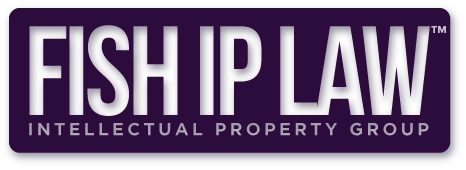Non-provisional patent applications (popularly referred to as ‘utility’ patent applications) claim functional aspects of systems, methods, chemical compositions, and apparatus. They are relatively difficult to obtain, but often extremely valuable. Non-provisional applications must: (1) provide sufficient information to enable one of ordinary skill in the art to make and use the invention (enablement requirement); (2) describe the best way that the inventor knows how to embody the invention as of the filing date (best mode requirement); and (3) provide sufficient information to demonstrate that the inventor was in possession of the claimed subject matter (written description requirement).
Non-provisional applications usually cost anywhere from $7,000 to $10,000 or more to search, draft, and place on file with the patent office, and about $10,0000 – $15,000 through issuance.
Non-provisional patent applications (popularly referred to as ‘utility’ patent applications) claim functional aspects of systems, methods, chemical compositions, and apparatus. They are relatively difficult to obtain, but often extremely valuable. Non-provisional applications must: (1) provide sufficient information to enable one of ordinary skill in the art to make and use the invention (enablement requirement); (2) describe the best way that the inventor knows how to embody the invention as of the filing date (best mode requirement); and (3) provide sufficient information to demonstrate that the inventor was in possession of the claimed subject matter (written description requirement).
Non-provisional applications usually cost anywhere from $7,000 to $10,000 or more to search, draft, and place on file with the patent office, and about $10,0000 – $15,000 through issuance.
Provisional patent applications are essentially placeholders. They provide a one year window during which an applicant can file a formal non-provisional (i.e. , utility or PCT) application. If no formal application is filed during that period, the provisional goes abandoned. Although provisionals can be extremely short (perhaps only a few sentences), and can omit the usual sections such as Background, Brief Description of the Drawings, and so forth, they must still satisfy the enablement, best mode, and written description requirements of a utility application. Although not required, it is a very good idea to include at least some claims in a provisional.
Provisionals can cost anywhere from $100 (for small entities filing on their own) to several thousand dollars (for an application with a more detailed description).
Design patents are restricted to claiming ornamental (i.e. nonfunctional) aspects of things. The squiggles at the bottom of silverware, for example, could be the subject of a design patent because their only function is decoration. Design patents are relatively easier to obtain, but are difficult to enforce and rarely have great value. Design patents cost about $1,000 to place on file, and possibly $2,500 or more through issuance.
Plant patents cover new and non-obvious varieties of plants, provided the plants are asexually reproduced other than by tuber propagation. This includes sports, mutants, hybrids, and transformed plants are comprehended; sports or mutants may be spontaneous or induced. Hybrids may be natural, from a planned breeding program, or somatic in source. While natural plant mutants might have naturally occurred, they must have been discovered in a cultivated area. Algae and macro fungi are regarded as plants, but bacteria are not.
Plant patents cost about $1,000 to place on file, and possibly $2,500 or more through issuance.
The PCT is an international treaty dealing with patent protection.
A PCT application is basically a door stop that extends the foreign filing deadline from 1 year to 2. 5 years or more in PCT countries, as measured from the earliest claimed priority filing. PCT applications are examined, and proper use of the PCT process can greatly reduce foreign filing charges. The examiner usually issues a combination Search Report / Written Opinion within 5 – 15 months of the earliest claimed priority date, and an Int’l Preliminary Examination Report (IPER) by about 18 or 19 months. If the applicant pays an extra fee (Chapter II fee), the examiner can consider the applicant’s arguments in preparing the IPER.
Although applicants can file international and regional applications, almost all patents are only national in scope. Applicants must eventually obtain patents in each individual country. Applicants file int’l applications chiefly because they push back the costs of filing national phase applications, and because they provide for a single prosecution rather than parallel prosecutions in each individual country. The main international application of interest is a PCT application, which covers more than 150 member countries. PCT filings cost about $2,500 for previously drafted applications. The main regional applications are filed through the European Patent Office (EPO), the African Regional Industrial Property Organization (ARIPO), and the Eurasian Patent Organization (includes former USSR states). Regional applications usually cost between $5,000 and $7,000.
Statutory Invention Registrations (SIRs) are filings with the USPTO used to make sure that (a) an inventor gets credit for having invented the technology, and/or (b) blocks subsequent inventors from claiming the invention. That approach can make good sense where a strong claim is unlikely to issue in view of the prior art, or perhaps the market demand is so low that the inventor will never make back the money he paid his patent attorney.
The patent office will publish the disclosure, and it will thereafter be considered prior art. Only about 2100 SIR have ever been published, all of which can be accessed through the usual USPTO patent database. They are given “H-numbers”-such as H342. Note that it is possible to retract the SIR from publication, upon filing of a timely petition to abandon.
